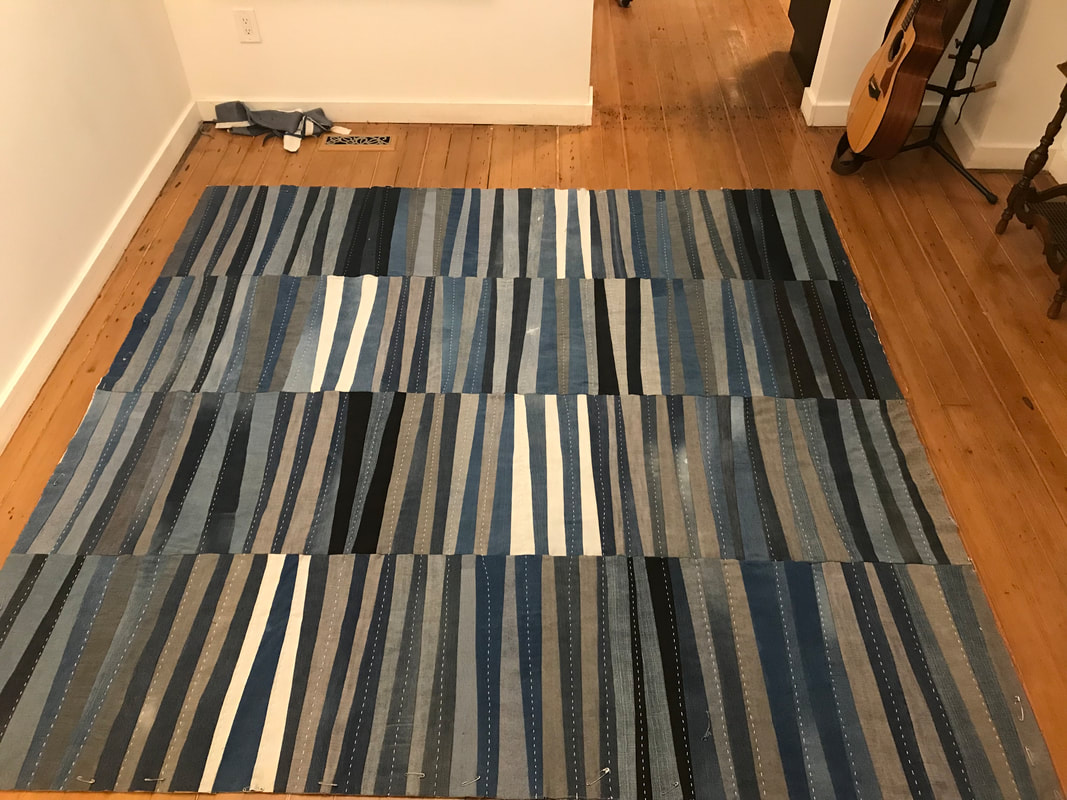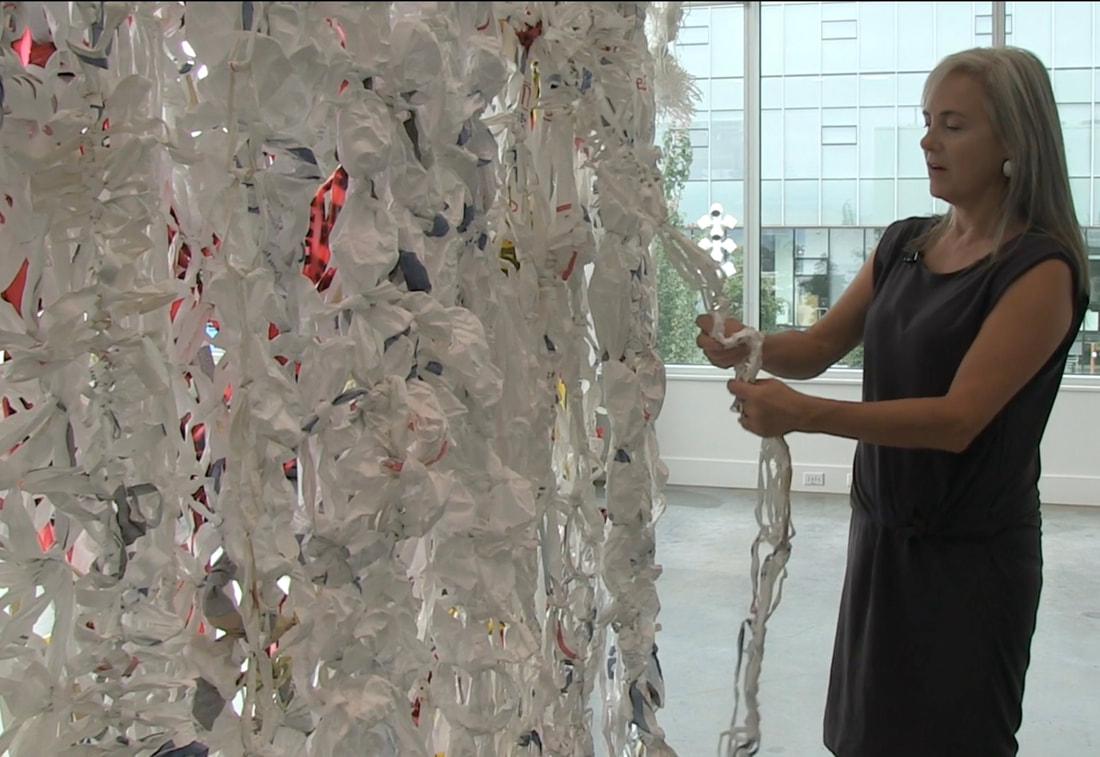
 Click HERE for a 10-minute journey through the methods and motivations behind this MFA thesis. (Film made by Ana Valine, Rodeo Queen Pictures, August 2020)
At first I thought all this must still be debris from the Japan tsunami. But that was eight years ago and the surf in my remote neck of the woods keeps throwing up snarls of monofilament netting, plastic shards, nylon rope, bits of fibreglass hulls, and styrofoam. So much styrofoam. I’ve been collecting up the stuff, inspired by this Gulf island’s own Styrophobe who’s taken on what some would say is a Sisyphean task of removing even the tiny beads of polystyrene from the clefts of rock along the shoreline. My gathering is a tiny, maybe even futile, gesture but I’m giving form to the invisible: the bits and pieces we overlook on the foreshore or in the forest that, when lashed, bound, and woven together demand attention. These small but critical masses of debris are inspired by the found-material sculptures of Judith Scott. As I lash, bind, and weave I think of how the kids in my life would like to be in on this: hunting for material, making form from their hands and imaginations. My gathering requires connecting with others to access materials. The Styrophobe, who’s also the guy in charge of the local dump, stands on the top of the garbage mountain, holding up uncertain objects for my consideration: How’s this? This stuff looks pretty good. Could you use this? In 15 minutes I fill the back of the pickup truck with a curated collection of colourful plastic throwaways: pool noodles, watering cans, yards of orange fencing, jerrycans, twine, tape, cleaning-pad refill boxes, five-gallon buckets and lids. I fill up with purple things, red things, plastics in acid green, electric blue, hazard yellow, and caution orange — all the colours of the petrochemical rainbow. After a lot of material prep (cutting off snags and sharp bits, wiping and washing off surface debris), I haul it to the local school where the kids, teacher and I dive in and play with the unwanted stuff. We have plans and we don’t have a plan, which is the right place to be with material exploration. This is where we learn to work with each material and not against its inherent nature, a great reminder of the futility of forcing solutions. This is where we learn to follow our hands, to work on our own or collectively over days and not minutes, to consider colour, form, and techniques for putting it all together, to create something that resonates with this time and place out of nothing anybody wanted. It’s an important start for the generation that will be forced to deal with this legacy of stuff long after the plastic-agers die off. It's getting close to a decade since I packed it all in: my needles and wool, my sewing machine and fabrics, my mid-level-management career. There was more to explore. I've been mixing it up with a wide range of materials (and makers) ever since but even I'm surprised to find that my latest tools of choice for bushwacking new routes of making are the ol' crochet hooks, knitting needles, rug hooks and embroidery needles. The line on the paper has always been too limiting to me; I need to pick up that line, play with it in my hands, turn it into area, then volume. I remain entranced by the possibilities of connecting something created by a silkworm or an industrial manufacturing plant to a mathematical model or a wearable with uncomfortable connotations. The beauty of fiber is in its physical and metaphorical ability to connect the Art side to the Design side (not to mention the science side), weaving the two together until it's clear that playing with ideas cannot be put into separate boxes. 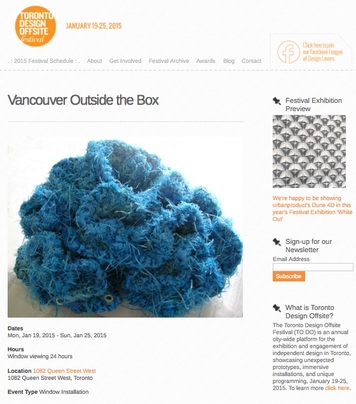 'Spore' (2011) serves as promo visual for the Vancouver design group. 'Spore' (2011) serves as promo visual for the Vancouver design group. Except if we're talking shipping boxes, for the Toronto Design Offsite (TO DO) Festival next month. A few object-experiments from my ongoing Fuzzy Logic series will be packed in there, as part of the Vancouver group of makers, selected by the Dear Human creative studio. It's all part of the ‘Outside the Box’ exhibits featuring works from three selected Canadian cities — Montreal, Calgary and Vancouver — and five from the U.S.: New York, Detroit, Chicago, Los Angeles and Seattle. It's a fine way to mine local design ideas and visions through an unexpected selection of objects that are shared in various locations via specific-sized shipping boxes. The Vancouver contribution includes nine individuals and teams who live, design and make in the greater Vancouver area. The connecting thread is a pursuit of a design practice through material exploration, according to Dear Human. "Whether through common applications of unusual materials or transcending common materials through unusual applications, exploration is evident in each of the included objects." Rounding out the Vancouver Outside the Box contingent are: Cathy Terepocki, Dahlhaus, Dina Gonzalez Mascaro, Hinterland Designs, Laura McKibbon, Rachael Ashe, and Studio Bup. 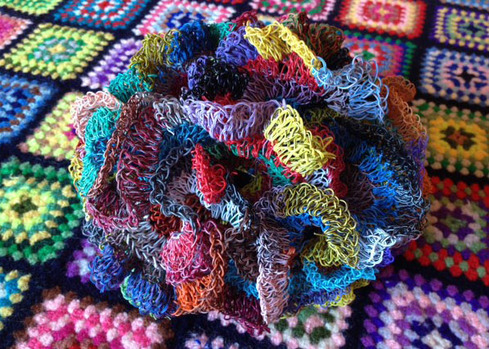 Playing with fiber optics (Photo by Carlyn Yandle) Playing with fiber optics (Photo by Carlyn Yandle) Vancouver Outside the Box will take over the windows at 1082 Queen Street West, Toronto, from January 19-25, 2015. TO DO is an annual city-wide not-for-profit week-long festival that celebrates and showcases the nation's design scene, providing exposure and cross-pollination of ideas and techniques. There are too many exhibits, installations, talks, parties and films to list here, so check out the full (and growing) schedule here as well as the fun promo video. 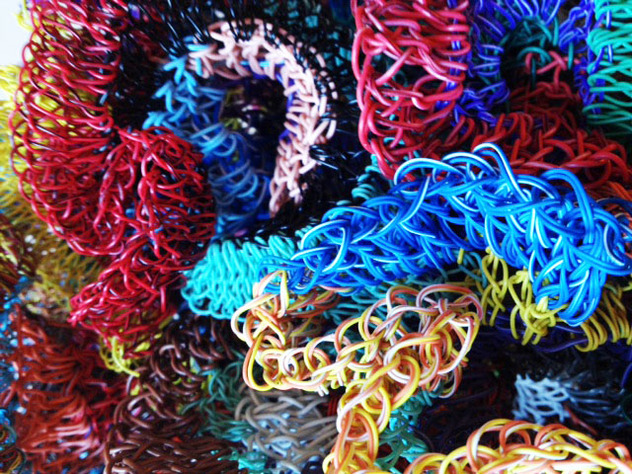 Detail of Fiber Optics (Photo by Carlyn Yandle) Detail of Fiber Optics (Photo by Carlyn Yandle) 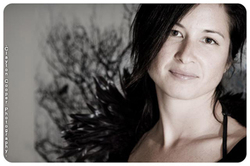 Arleigh Wood Arleigh Wood A few weeks back, Vancouver artist-blogger Arleigh Wood asked me if I would be willing to catch the baton on an ongoing, international writers' blog tour. I'm bullish on all collaborative, non-monetizing projects involving social media so I agreed to devote one column to answering the four questions, then passing the baton myself. Dispensing with the urge to apologize for making this all about My Process, here goes: What are you working on? I’ve just finished up a public artwork in Richmond, and finished writing about it, too, so I’m looking forward to re-joining the world beyond this all-consuming project. On my good days I see this as the ‘fallow’ period, when I can absorb, research, reflect, rest and socialize. Other days I see this as my ‘unemployed’ period. What I’m really working on is this idea that ‘working’ is not synonymous with ‘getting paid.’ The weekly blog — I still call this thing a column — provides structure and requires that I get out there and get informed and involved. My journalism career conditioned me to write, on deadline, and regularly. Now it’s become an unconditional part of my creative process. Why do you do what you do? A couple of days ago I heard a radio interview in which the guest musician said something to the effect of: “Artists can’t help themselves. They do what they have to do.” I relate to that strongly. I will do just the bare minimum of cooking, cleaning, visiting, caretaking, or travelling to buy myself more time to make. I was the kid in the classroom whose only question about the in-class assignment was, “After we do this can we go to the arts and crafts corner?” The leopard really does not change its spots. How does your creative process work? I used to write for a living, then make on my off hours, which sustained me for many years but at some point I knew that when it was financially possible I would have to flip the priorities. I loved the community-building that happens through reporting and writing but I was so creatively spent at the end of the day the best I could do was follow directions by Martha Stewart. I started resenting the fact that I was basically selling all my creative energy. Now I make first, write later. I still need the writing, though, because it leads to more making. That really begins with a compulsion, a need to quell my anxiety. Repetitive, often laborious work is a kind of meditation. With my muscles and motor skills engaged in a pattern of movement or a set of gestures, my brain is free to roam. Often I don’t know at the onset what I’m making but it reveals itself, the way fiction writers often talk about how they will introduce a character then watch that character develop. My making opens up possibilities for new explorations and ideas. What makes your work/blog unique? 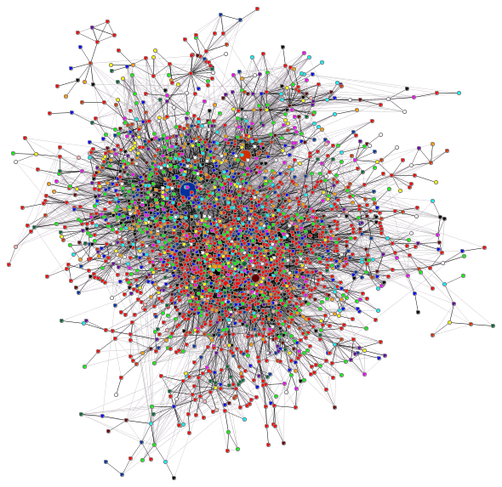 Charting the blogoshphere (from datamining.typepad.com) Charting the blogoshphere (from datamining.typepad.com) I have trouble with the concept of uniqueness. I see my work as a small act of participation indicative of our unique social species, one buzzy speck in the hive. I blog to take full advantage of the free opportunity (for now) to participate in the larger conversation, by sharing visually and through the written word. I am not driven by a need to amass followers or accumulate hits but more by a compulsion to create a personal record of developing creative process and culture. It may just dissolve into the ether, or maybe it will be added to the social record but at least no trees were sacrificed in the process. 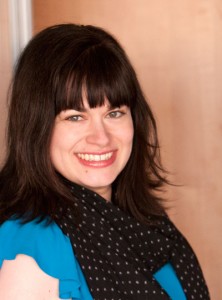 Who would you like to pass the blogging baton to? Leanne Prain is another Vancouver-based maker/writer combo and the author of the newly published Strange Material: Storytelling Through Textiles; Yarn Bombing: The Art of Crochet and Knit Graffiti (co-authored with Mandy Moore) and Hoopla: The Art of Unexpected Embroidery. She blogs about crafts (especially textiles) and the people who make them, design, art, urbanism, publishing, and her writing life. She also does public speaking and leads workshops. Meet Ms. Prain in person at Hot Wet Art City gallery on Tuesday, Oct. 7, 7:30 p.m. when she and fellow authors Betsy Greer and Kim Piper Werker tackle “The Intersection of Craft, Creativity, & Activism.” Linking over to you, Leanne. It's one thing to dream up an idea for the back end of the elevated Canada Line track and quite another to see that dream come together in a mammoth aluminum sculpture. 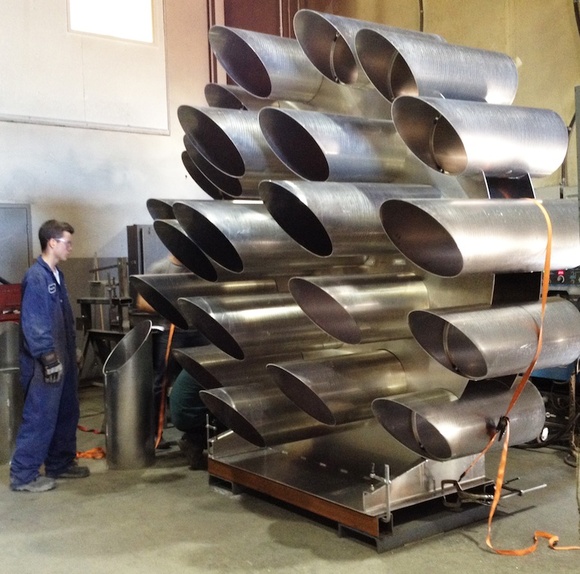 Metal fabrication at the Select Steel shop, Delta. Carlyn Yandle photo Metal fabrication at the Select Steel shop, Delta. Carlyn Yandle photo So when I got my first glimpse of the progress of Cluster at the metal fabricators this week, the piercing clang and whine of the shop suddenly seemed to give way to the theme from 2001: A Space Odyssey. Whoa. It was exactly as I had imagined it, except for the immensity. That something so voluminous could come out of a bundle of bubble tea straws was sort of short-circuiting my brain. Well?, their faces seemed to ask. "It's... very... big," I said, immediately thankful their earplugs spared them from hearing the bleeding obvious. 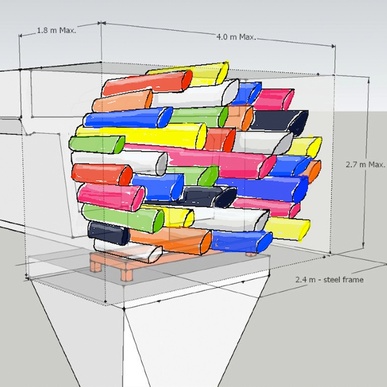 Cluster concept sketch (image by Carlyn Yandle) Cluster concept sketch (image by Carlyn Yandle) Of course, no one sees these moments of shock, nor all the anxiety, revelation, frustration, obsession typical of the emotional swings that go into the creation of public artwork. When Cluster is hoisted into position next month, its narrative will be in the eye of the beholder, its entirety read in an instant. But a new Richmond Art Gallery exhibit (opening next Friday evening, Sept. 5) is pulling back the curtain on the process behind five public artworks that dot the city, in its City As Site show, curated by RAG director Rachel Lafo. Here is where visitors will see evidence of the beginning of the ideas that were pitched, developed, reworked, and finally translated into forms for public placement. Combined with that focus is a survey of all artwork in the local public sphere that is defining Richmond as not just another clutter of condos but a specific space in a particular time. 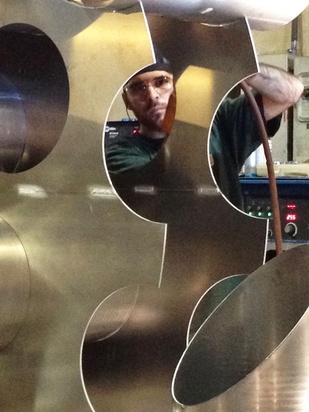 Metal fabricator Jordan Thys at work. (Carlyn Yandle photo) Metal fabricator Jordan Thys at work. (Carlyn Yandle photo) For me, laying bare some of my half-baked early concepts and awkward sketches that led to the development of Cluster (as well as the Crossover crosswalk design) is slightly uncomfortable but this is a warts-and-all display. Not shown is the high level of trust that must exist for any collaborative project to succeed: trust in one's own ideas, the physical properties of the materials, the skill and temperment of fabricators, the foresight of structural engineers, and the patience of the commissioning bodies. Public art projects come with the headache-y package of issues of insurance, permits, budgets, timelines and many unforseeables. In short, it's much more than a good idea. Embedded in those physical projects is the intangible quality of faith. Cluster isn't done yet, but I have faith that it will soon be a thing in the manufactured landscape that will spark conversation, which will connect people and by extension contribute toward a unique, vibrant community and cultural hub. Fingers crossed anyway. 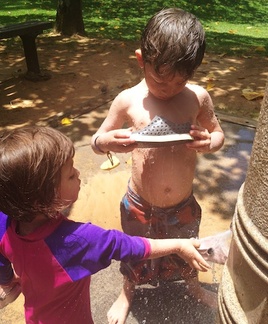 I would rather watch the little kids in my life play than watch the best TV. But it's tricky because they don't like to be observed and if they feel I'm too interested, they are on to me and it all comes to a halt. I have to refrain from the urge to referee, guide, demonstrate or facilitate. Because it's only when they're sure the adults are not interested that the seriously unstructured play comes on, with all its small power struggles and shared moments of joy. (See legendary Lynda Barry talk about play at the end of this post.) I'm fascinated by the ability of kids to spontaneously engage in creative collaboration (a.k.a. 'play') with other kids they didn't know 10 minutes before. It's a lesson in the power of putting ourselves out there creatively, to let go of control and all expectations. 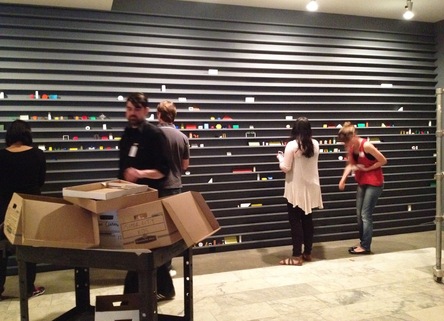 Playing with toy bits after hours at the VAG. (Carlyn Yandle photo) Playing with toy bits after hours at the VAG. (Carlyn Yandle photo) In the past week, I took my inner kid out to play with strangers in two distinct venues: the Vancouver Art Gallery, in preparation for the opening of Douglas Coupland's major solo show, and at the first Arts & Crafts Social at a small Mount Pleasant neighbourhood gallery. After-hours at the Vancouver Art Gallery, we were all quickly introduced before we were invited to attack and stack Coupland's priceless/useless toy bits to assemble his imposing 'Brick Wall' at the entrance of the exhibit, under the artist's direction. We were just playing but in retrospect we were problem-solving issues of density, colour, weight, communication, and give-and-take. We were just talking but on reflection we were wrangling with issues of value, object-images, collections, consumption, globalization and categorization. 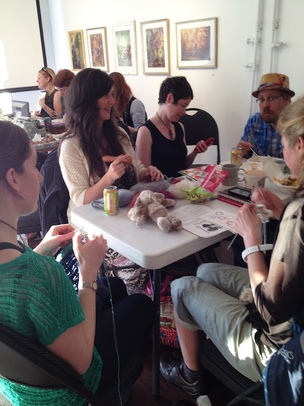 A few days later, I hauled out one of my portable projects and headed to the inaugural Arts & Crafts Social (#HAWCsocial) at Hot Art Wet City Gallery hosted by Rachael Ashe and Kim Werker. The beauty of a drop-in, BYOP (project) event is that if you're feeling a little shy, at least you have your work to focus until you're comfortable enough to mingle. The tables soon filled up with conversation-starters beyond the beer and wine: stabby felt needles, crochet and rug hooks, Thai take-out, Sharpies on canvas, a digital drawing pad and an old manual typewriter. You play, you learn — about other methods, applications, directions. And you get to hang with people not typical of your usual social circle. To me it was worth the admission-by-donation just to get a glimpse of the unrestrained mind of Billy Patko (below, left). Which got me thinking: what would Patko's prolific doodles look like in a large-scale format? (See Photoshop'd sketch, below.) Just playing. Coupland's show, Everywhere is Anywhere is Anything is Everything runs May 31 to Sept.1. The next Arts & Crafts Social at Hot Art Wet City is June 25, 7:30 - 11pm. 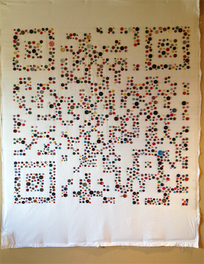 After three months of sewing one donated button after another into a giant QR code, the big moment arrived this week: time to stand back and scan that baby with a reader app, translating this quilt-thing to read, "The devil is in the details." Except it didn't read. Don't panic!, I thought, then spent the entire next day working with a photo image of the QR Button Blanket, Photoshopping in more buttons and darker buttons and bigger buttons, trying to add the minimum amount of density for the software program to register the pattern and work its magic to produce the punchline. No luck; even a sliver of white in one button cluster puts a wrench in the wholecloth works. I filed this one under the category of Epic Fail, not worth finishing it as intended, framing it in black bias binding. I do not want to create something that is 'still' good; I want the thing to be good, full stop. 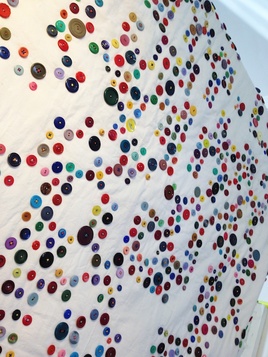 Failure demands confronting the why. Why conceive such a laborious, risky project in the first place? Why endure the painstaking process when half-way through it was becoming abundantly clear that this was not going to 'read'? But there is another power here, and that's tied to the process beyond the product. The achievement may lie in the endurance (in an increasingly A.D.D. world) that is not necessarily attached to the product after all. It may be in seeing it through, without the promise of a sure result. The power may lie in the humble, everyday materials and the community of women who contributed all those bits of plastic saved from the waste stream. (There should really be a global ban on production of billions of plastic buttons. Plant-based plastic, bone, wood, and leather- or fabric-wrapped tin buttons eventually return to the earth.) But what's really starting to click in for me is the cultural reference of this button-grid design. A decade ago, it might have been viewed as an oddly arranged colour field or an abstracted grid but we're so acclimatized to codes that the pattern begs to be 'read.' The fact that this is irresolvable might be annoying. And that's interesting. 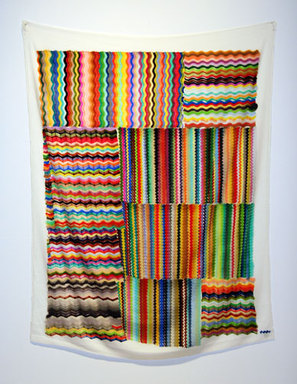 Wavy Gravy, marker on synthetic velvet, 58" x 43" Wavy Gravy, marker on synthetic velvet, 58" x 43" The possible multiple references could be more engaging than the one answer provided by a QR reader app. There's something to be learned in the discomfort of the open-endedness. Moments like these, I seek out the artists who have embraced what New York artist Polly Apfelbaum calls the 'tough beauty' of visually exciting works that incorporate everyday materials in surprising ways. Apfelbaum, who calls herself a bad crafter, articulates the process of hard work in this video. "I work all the time," she says, without a schedule and in a highly experimental way. "You make the work and then you hope for the best." "It's very important to get your fuck-you back." I'm going with that. 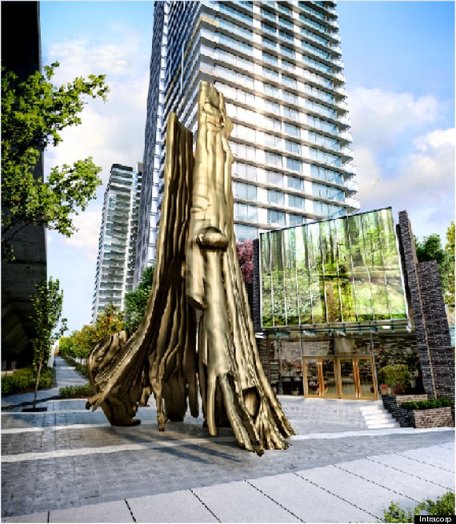 This week marks the unveiling of Golden Tree, Douglas Coupland's latest public artwork, to be installed next year at the southern gateway to Vancouver, at Cambie and Marine Drive. The gold-patina, steel-reinforced resin and fiberglass mirror image of the famous hollow tree in Stanley Park will stand in front of a billboard-sized image of Stanley Park forest at the entrance to an Intracorp condo tower complex. And already the tongues are wagging. This is when the art is working, when people are a little alarmed at the materials, the placement, the meaning. If art is a conversation with many often conflicting viewpoints, public artwork connects directly to the public. We not only have the opportunity to weigh in; we have the right. So I'm weighing here on Golden Tree: Love, love, love. A respected colleague suggested I was drinking the Coupland Kool-Aid. So I had to think about that. Am I too close to the artist to form a critique? What exactly has me digging the blingy dead tree-thing? For the record, unlike Coupland, I was not in the 'for' camp for propping up the dead tree-thing in Stanley Park, or, at least in the way it was done (see video clip below on the story behind the prop-up project). I could not understand the panic around the parks board's news that the rotted, leaning partial carcass would have to go back to nourishing the forest floor. To quell the knee-jerk public outcry, the shell-fragment has been stabilized with concrete and steel. So now we have fake tree-thing, with all the artistic integrity of a movie prop or Disney street-furniture, and I'm sure the tourists love it. There had to be a better way to remember that scrap of a giant relic of the last stand of old growth forest that has been replaced by a dense forest of glass, concrete and steel. And now we have it, incongruously situated in the newest area of condo-tower densification, the gold evoking (to me, at least) festishization of an object, or our view of the ancient temperate rainforest seen through gold-coloured glasses as we glide by on the Canada Line. I like the idea that the title necessarily includes 'tree' because this sculpture's connection to tree-ness is tenuous, sort of like someone's stuffed dead pet cat, now with marble eyes and in regal pose for all eternity. The title could have been This is Not A Tree, evoking Belgian surrealist artist Magritte's The Treachery of Images work, specifically his Ceci n'est pas une pipe (This is Not A Pipe) that is in fact not a pipe but a painting of a pipe. From a working-artist viewpoint, Golden Tree, like Coupland's Infinite Tire, ingeniously walks that fine line between creating a work that will be approved by the private developer but that doesn't pander to that payer. Its form, placement and materials deny a single meaning, reflecting these shifting, tenuous times. It could have easily been included in The Uncertainty of Objects and Ideas at the Smithsonian for its powerful subtext. (Hear more about the power of uncertainty in sculpture in this podcast interview with Hirshhorn museum curator Anne Ellegood.) Now that we have a powerful tribute to the last "standing" giant conifer in the downtown area, perhaps we can let the original go the way nature intended, helping ensure the future of the city's lungs in Stanley Park. 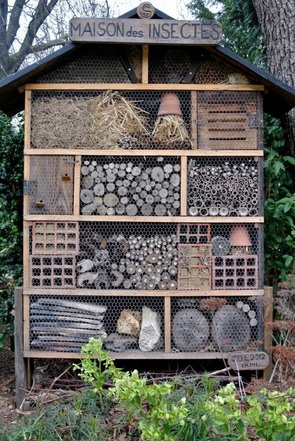 My mind has been buzzing with thoughts of legendary environmentalist-artist Joseph Beuys as I've been hatching an idea for a public artwork that is not so much intrusive as inclusive, especially if you're a native mason bee. It is the convergence of my love of patterns of circles within circles and my growing understanding of the immense value of the Blue Orchard (aka Osmia) Mason Bee. This non-stinging little guy gets up early in the season, collects nectar and spreads pollen at the same time, and is a workhouse in the pollination business compared to the introduced honey bee. Like most of us, Blue Mason Bees live on their own but are gregarious except their preferred condo complexes are holes in wood. It turns out they also live quite nicely in paper straws that are closed at the back end. Artists/gardeners/environmentalists/industrial designers have been innovating ways to boost the population of mason bees in response to colony collapse of the honey bee. Condo complexes set up in the Jardin du Luxembourg in Paris (above) and in the Paris Botanical Garden provide real inspiration, as do the smaller mobile homes, like the one below in Copenhagen. 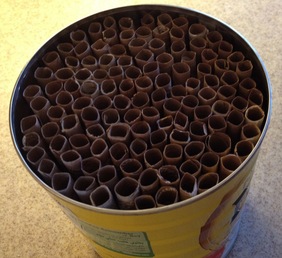 Carlyn Yandle photo Carlyn Yandle photo I've been experimenting with making the straws (see video at bottom) with an emphasis on design, found materials (paper bags and coffee cans). Now for a little colour. My theory is that bubble tea straws could provide just the right waterproof structure for accommodating all those straws the females pack with cocoons. The straws would be easily removed and the cocoons harvested, cleaned and stored in the fridge for the winter, ready to be set out next spring. I have no idea whether this will work, but the creative process is one of problem-finding and problem-solving. 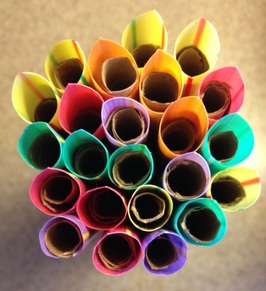 Carlyn Yandle photo Carlyn Yandle photo The plan uses the colourful clusters of the translucent angled straws because they provide built-in overhangs for each condo while allowing for the necessary south light to hit each doorway. The clusters-within-cluster design of fiber-optic cables (see below) sets the pattern course in a design that moves from pinky-finger width to something on a grand scale that can be seen from a block away by humans. It's one of those situations where it will take some doing to get to some knowing. 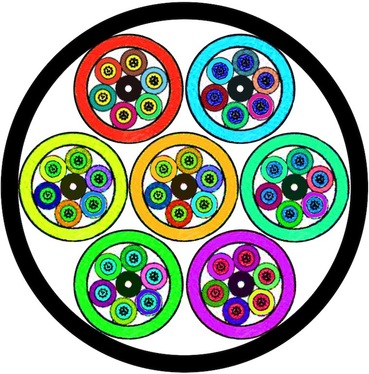 Cross-section of a fiber-optic cable Cross-section of a fiber-optic cable 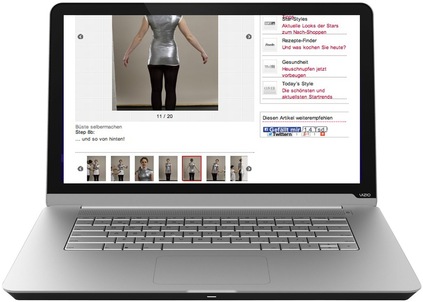 Everything I need to know I learn on blogs, at least when it comes to making stuff. Most recently, I needed to display a knitted artwork for an upcoming show this weekend but I did not want a big ol' plastic men's torso crowding up my studio so I googled 'how to make a mannequin.' Up popped yet another fresh and earnest blog, posted by another fresh and earnest maker. And naturally not only has she posted sequential how-to photos but does the right thing by citing the blog that originally inspired her, which happened to be the Burda patterns website in German and which she re-capped so readers aren't lost in translation. Nobody gets anything out of this deal but a little personal maker pride and a good feeling that they're sharing the love with everyone else who loves doing stuff with our hands. I appreciate the loosey-goosey instructions that are mostly communicated in pictures, requiring innovating as I go. And so I did learn how to make a mannequin, and it was good. 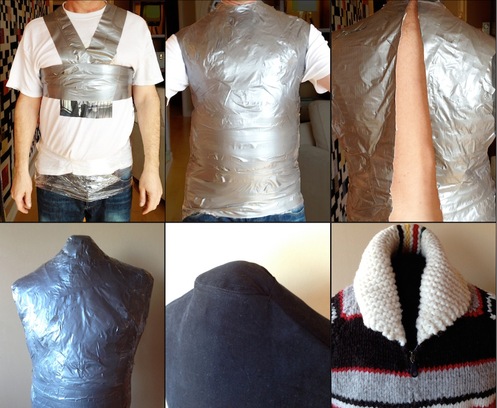 In fact, it was a damn fun Saturday afternoon activity, and it worked out just fine. Step 1: Find a victim of the size you need. Step 2: Put him/her in an unwanted T-shirt (it will be sacrificed for the cause). Step 3: Wrap some plastic wrap around the neck and at the bottom edge of the torso. Step 4: Completely wrap the torso in duct tape. One of you will get dizzy from turning. Step 5: Cut the T-shirt/tape shell off up the back. Step 6: Remove from victim and tape the back edges together, then tape across the neck and the armholes. Step 7: Stuff it with cushion foam chips. Step 8: Stick the torso on some sort of stand (floor lamp base, dowel in chunk of wood, what-have-you. (I weighted a metal stand I had lying around with a 10kg barbell plate.) Step 9: (I added this one) Sew up a fitted black microfiber casing. Step 10: Staple the bottom together and dress (you and the mannequin). The best part is that once the show's over, I can de-stuff the torso, lose the base and fold away the mannequin shell for future exhibits. Just doing my tiny part in the hive full of maker bees. |
Sharing on the creative process in long-form writing feels like dog-paddling against the tsunami of disinformation, bots, scams, pernicious sell sites and other random crap that is the internet of today. But I miss that jolt of inspiration from artists sharing their work, ideas and related experiences in personal, non-marketing blogs, so I'm doing my part.
browse by topic:
All
Archives
June 2024
|
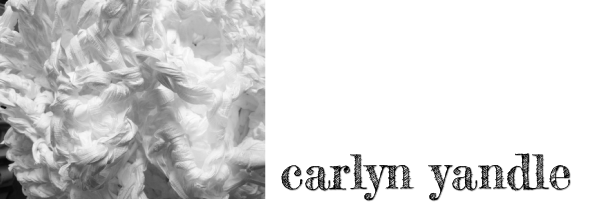
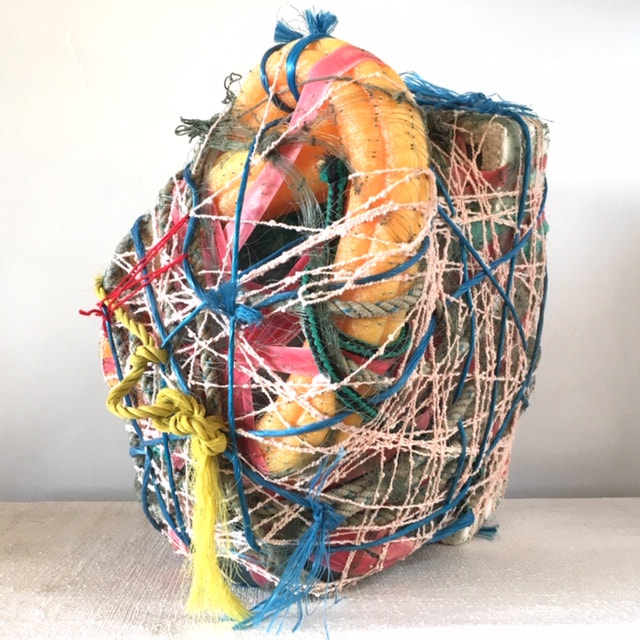
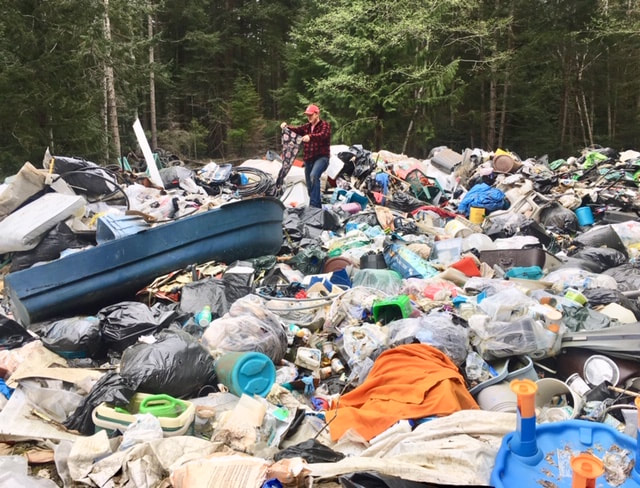
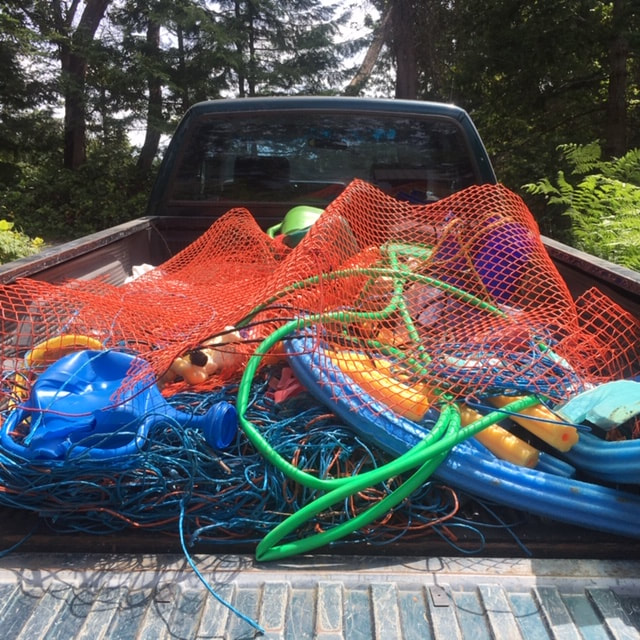
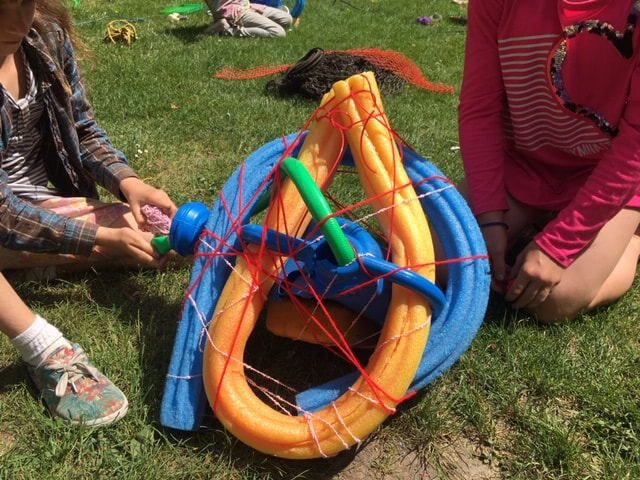
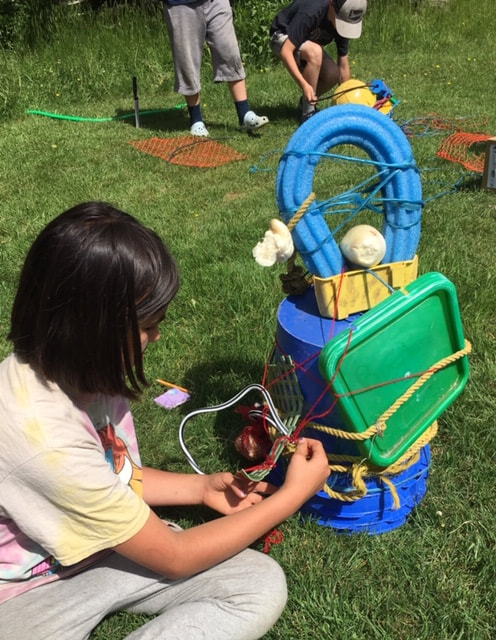
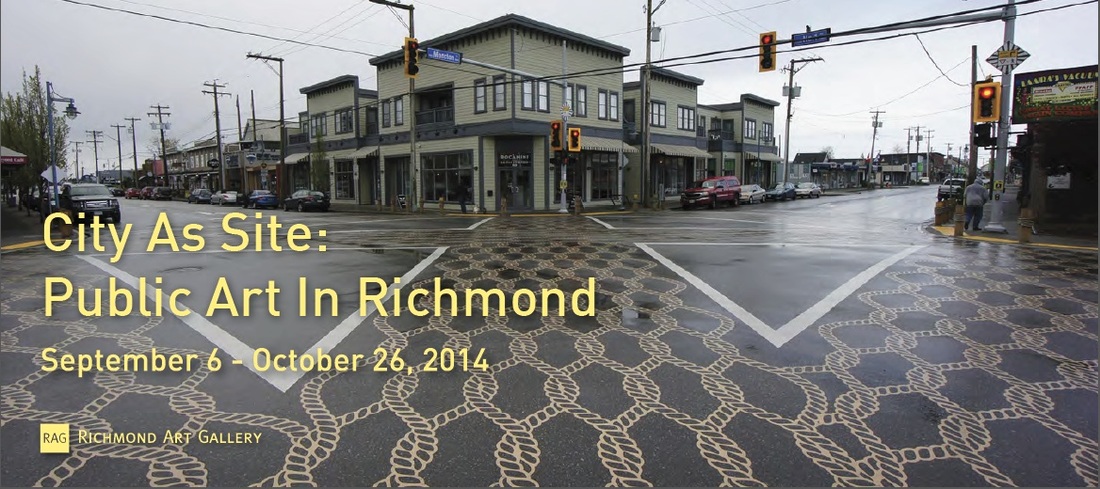
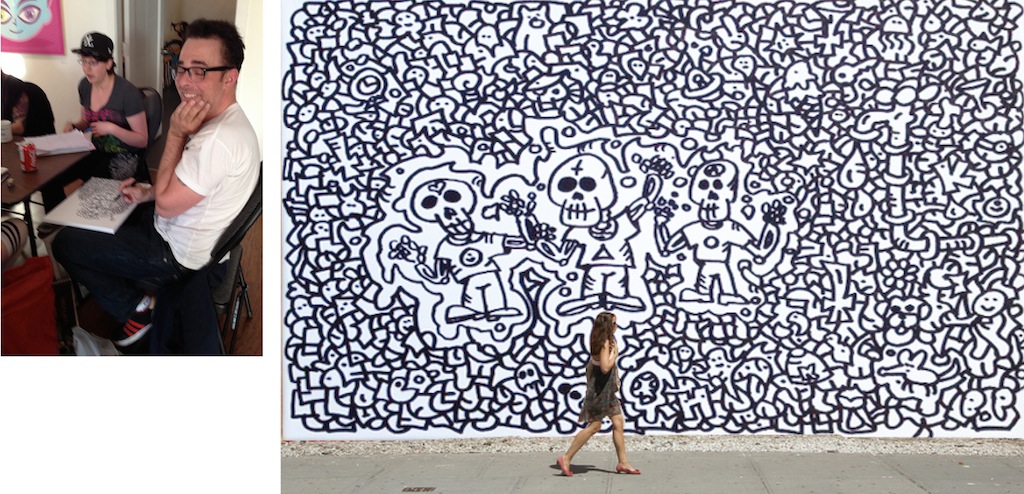
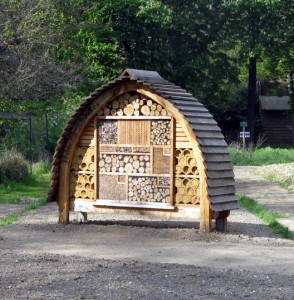
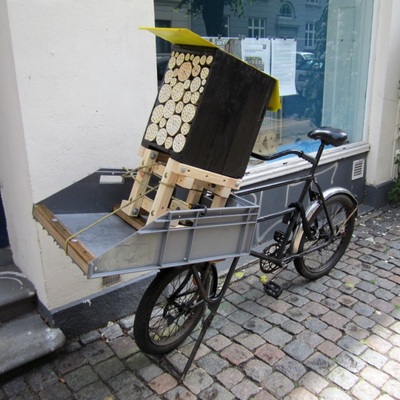
 RSS Feed
RSS Feed

